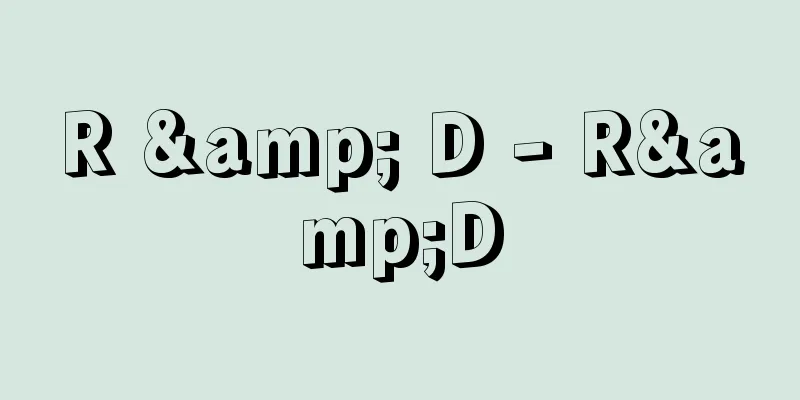Word processor

|
A device or program for creating documents efficiently. It can input, output, store, revise, and edit documents. It is often abbreviated to word processor. There are those that use general-purpose computers and those that are dedicated machines. In the West, where typewriters are used daily, when conversational editors developed for creating computer programs appeared, it was natural to use them to write letters and prepare manuscripts. Eventually, programs specifically for creating such documents were created. Among them, runoff, created by Jerome H. Saltzer (1939- ), in 1965, TeX, created by Donald Ervin Knuth (1938- ), in 1979, and Scribe, created by Reed, are well-known. There have been many personal computers since MicroPro's Word Star, created in 1978. Many of today's word processors are equipped with dictionaries that can detect spelling and grammatical errors. In Japan, the development of kanji was delayed due to problems with the method of inputting kanji and the cost of the equipment, but in recent years, output devices have become cheaper with the spread of personal computers, and home word processors have also become popular. The establishment of the JIS (Japanese Industrial Standard) code for 6,349 kanji has contributed greatly to this. There are two ways to input kanji: one is to define a combination of about two keys for each kanji, and the other is to input the reading of the kanji in kana or romaji and convert it to kanji. In the latter kana-kanji (romaji-kanji) conversion method, it is normal to input the kanji by phrase or sentence, not by kanji, and this method is convenient for general users. This method uses a dictionary, which prevents mistakes in okurigana and ateji, but it is time-consuming to select the appropriate word from among homonyms, and selection errors can occur. This drawback has been greatly improved by improving the dictionary and reading the context. The programs that convert the input into kanji codes are called FEP, IME, IM, etc., and are used for kanji input in other software separately from word processors. One of the important functions of a word processor is to store documents on other media such as a hard disk drive, which is useful for creating similar documents or for making copies of letters. Another important function is to revise documents, which is extremely effective in allowing you to easily write up and revise letters, documents, and various manuscripts. To fully utilize this function, the word processor is equipped with the ability to rearrange and copy sentences, search for words, etc. Many word processors also allow you to register frequently used long words and sentences and then quote them in a shorter reading, create graphs, and calculate tables. [Kazuo Nishimura] As word processing software becomes more sophisticated, it can now handle graphics such as images in addition to text and tables. It also has a high degree of freedom in layout, and has functions comparable to DTP software for publishing. Main software includes "Word" and "Ichitaro". Also, when specializing in the input and editing of characters (text) only, a text editor is often used. An example of this is "Notepad" that comes with Windows. [Editorial Department] [Reference] |Source: Shogakukan Encyclopedia Nipponica About Encyclopedia Nipponica Information | Legend |
|
文書を効率よく作成するための機器またはプログラム。文書の入出力や記憶をし、これを改訂、編集することができる。略してワープロということが多い。汎用(はんよう)のコンピュータを利用するものと専用機とがある。 タイプライターを日常的に使っている欧米では、コンピュータのプログラム作成用に開発された会話型のエディター(編集系)が登場したとき、これで手紙を書いたり、原稿をつくったりするのは自然なことであった。やがて、そのような文書の作成専用のプログラムもつくられるようになった。なかでも、ソルツァーJerome H. Saltzer(1939― )が1965年につくったランオフrunoffと、クヌースDonald Ervin Knuth(1938― )が79年につくったテフTeXや、リードがつくったスクライブScribeは有名である。パーソナルコンピュータには、マイクロプロ社が1978年につくったWord Star以降、さまざまなものがある。現在のワードプロセッサーの多くは辞書を備えていて綴(つづ)りや文法の誤りを検出することができる。 日本では、漢字の入力の方法と機器の価格が問題で開発が遅れていたが、近年、パーソナルコンピュータの普及とともに出力装置が安くなってきたので、家庭用のワードプロセッサーも普及してきた。これには、6349種の漢字にJIS(ジス)コードを制定したことが大きく寄与している。漢字の入力方式には、漢字ごとに2個程度のキーの組合せを定めておく方式と、漢字の読み方を仮名やローマ字で入力して漢字に変換する方式とがある。後者の仮名漢字(ローマ字漢字)変換方式では、漢字ごとではなく文節や文章ごとに入力するのが普通であり、一般の利用者にはこの方式が便利である。この方式は辞書を用いるので、送り仮名や当て字の誤りが防げる反面、同音異義語のなかから適切なものを選択するのに手間がかかるし、選択の誤りも生じる。この欠点は、辞書を充実して文脈を読み取ることによってだいぶ改善されてきている。入力を漢字符号に変換する部分のプログラムをFEP、IME、IMなどとよび、ワードプロセッサーから独立して他のソフトウェアの漢字入力にも用いられている。 ワードプロセッサーの重要な機能の一つは、文書をHDDなど他の媒体に記憶させることで、類似の文書をつくる業務や手紙の控えなどに役だつ。もう一つの重要な機能は、文書を改訂することで、手紙や書類や各種の原稿などを気軽に清書し、修正できる効果は絶大である。この機能を十分に発揮するため、文章の入れ換えや複写、字句の探索などができるようになっている。また、よく使われる長い単語や文章を登録しておいて短い読み方で引用したり、グラフの作成や表の計算をしたりすることができるようになっているものも多い。 [西村和夫] ワードプロセッサー用ソフトウェアの高機能化に伴い、文章や表組みに加えて画像などのグラフィックスも扱えるようになっている。レイアウトの自由度も高く、出版用のDTPソフト並みの機能をもっている。おもなソフトウェアとして「ワードWord」や「一太郎」などがある。また、文字(テキスト)の入力と編集のみに特化した場合、テキストエディターが使われることが多い。Windows(ウィンドウズ)に付属する「メモ帳」などがそれにあたる。 [編集部] [参照項目] |出典 小学館 日本大百科全書(ニッポニカ)日本大百科全書(ニッポニカ)について 情報 | 凡例 |
<<: Wadomari [town] - Wadomari
Recommend
Ozma Project - Ozuma Keikaku (English)
This project was the starting point of attempts t...
Koller, K.
…Ether was introduced to Japan in 1855 (Ansei 2),...
Kung Ye
[raw]? [Died] King Keimyō 2 (918) King Taebong of ...
Map - Map (in English)
A map is a representation of the state of all or ...
Pseudotrachea
…The suborder Isopoda includes the Ligididae, whi...
Kanji and Kana mixed text
...This is due to the value placed on writing in ...
Bernardino Luini
A painter of the Milanese school in Italy. He fir...
Horse riding license - Bajomen
Land in manors and kokugaryo that was exempt from ...
debris avalanche
...This causes great disasters at the foot of the...
Mikołajczyk, Stanisław
Born: July 18, 1901 in Holsterhausen, Westphalia [...
S-polarized light
...The relationship between the amplitude and pha...
Correns, C.
…Mendel's most important contribution was his...
Electron transport chain
A system that transfers electrons or hydrogen in b...
Izawa Iekage
Year of death: Kenpo 3.3.12 (1215.4.12) Year of bi...
Polygonia c-aureum
A butterfly of the Nymphalidae family of the Lepid...









